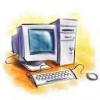Search the Community
Showing results for tags 'netgear'.
-

How to Auto Mount Netgear ReadyShare in Linux Mint 17
mhbell posted a topic in Bruno's All Things Linux
How to Auto Mount Netgear ReadyShare in Linux Mint 17 I have a Netgear N900 WNDR3700v3 Wirless Dual Band Router, with ReadyShare. I have a USB External Hard drive attached to the router (ReadyShare) and wanted to have the USB Drive attached to the router Auto mount the drive at bootup. I accomplished this by inserting a line in my /etc/fstab file. I tried several different methods and now of them worked with Linux Mint 17 Here is what I did to solve the problem. 1. I made a directory called Public, by opening a terminal press ctrl + alt + T then type the following sudo mkdir /media/public Linux Mint 17 mounts the drive in /media, The /pubic is where the ReadyShare drives directory, which is called USB_Storage, will be mounted. 2. I then opened a Editor to edit the fstab file, in the terminal type sudo gedit /etc/fstab This will open the editor with Elevated privileges. 3. At the bottom of the fstab file place a line like this: # Auto Mount Netgear ReadyShare USB_Storage drive //192.168.1.1/USB_Storage /media/public cifs user,guest,sec=ntlm,uid=your user name goes here 0 0 Explanation: //192.168.1.1 Rather than use The Lable ReadyShare I used The IP address of the router instead. /USB_Storage The name that Netgear assigns to the directory on the readyshare drive. /media/public The mounted drive so I can access the drive on the left in my home directory. Public is what I click on to create, Delete, Read or write files and directories. cifs is the file system "sec" is the security mode and determines how passwords are encrypted between server and client ( even if you don't require passwords ). ntlm used to be the default, things change and in some cases the new one has to be used ntlmssp most NAS drives are from the old school and have to use the old one ntlm uid this is where you put your user name. A few other things. Samba or cifs utils has to be installed the # pound sign in fstab means remark and is not read when the file is executed. You put it ahead of any remarks in the file. Hope this helps someone. Mel- 2 replies
-
- 2
-

-
- netgear
- readyshare
-
(and 2 more)
Tagged with:
